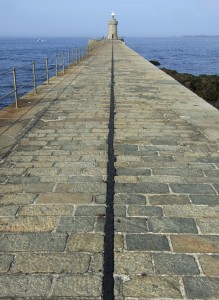 When I first started doing running races, I raced to participate, to experience the race, and that was about it. Let me first say that there is absolutely nothing wrong in racing with that mindset. My perception of racing started to change as I learned more about running, form, training techniques and drills, and my own potential. My perception of races also started to change the first time I adopted a real training plan which was for my first half marathon in October 2008.
When I first started doing running races, I raced to participate, to experience the race, and that was about it. Let me first say that there is absolutely nothing wrong in racing with that mindset. My perception of racing started to change as I learned more about running, form, training techniques and drills, and my own potential. My perception of races also started to change the first time I adopted a real training plan which was for my first half marathon in October 2008.
I distinctly recall that race being the first time I set a hard goal that I hoped to achieve. For that run my goal was to finish under two hours, which I just barely did. That race pretty much set the tone for how I’ve been running, training, and racing which is goal-oriented.
I can safely say that I no longer “just go for a run.” That might bother some people but for me it’s part of why I enjoy running. Whether I’m going three, four miles, or more I’ve always got a goal. That goal might be to accomplish a certain type of run–fartlek, tempo, or hills–or achieve a specific time like race pace or my slow and steady pace. Each run is always tied to a larger goal, in my case, races.
My race schedule tends to include an enormous variety with middle long distances being my favorite. The 10K, 10-miler, and half marathon are my top choices for runs I’d do every weekend (if my schedule and wallet could afford it). I find 5K races a fantastic way to test my limits for race pace, and marathons of course are the ultimate in achieving endurance (unless of course you do 50-milers or ultras in which case I salute you!).
Setting a Race Pace Goal
When it comes to setting race pace goals, my list looks like this:
- 5K: 7:30-8-minute/mile pace
- 10K: 8-8:30-minute/mile pace
- 10-miler: I have yet to determine my preferred pace for this distance but my goal is always to finish in under 90 minutes, so the 9-minute/mile pace
- Half marathon: under 2 hours
- Marathon: under 4 hours (though my new goal is a Boston qualifying time)
I don’t think you can set a race pace goal willy nilly. You have to have a starting point by which you can judge your race pace potential. Many coaches and trainers will suggest running a timed mile on a track to get a sense of how fast you can go. Once you have that time, however, you cannot (in my mind) simply multiply that pace by however many miles you intend to race. That said, there are plenty of race pace calculators out there if you want to plug in the numbers. I think race pace is something you work toward with a training plan rather than just go out and do. Race pace is also something you begin to realize throughout training and which changes as you become more fit, as your leg turnover improves, as your form becomes more natural, and as you race more often. I am by no means a certified coach or professional runner but I know from my own experience that it takes time to determine a realistic race pace and even more time to achieve that goal.
Adjusting the Goal
 Perhaps the most valuable purpose of following a training plan is to be able to get to race day injury-free. Indeed, a training plan–whether you find one online or have one customized for you by a coach–is also intended to prepare you to do your absolute best and help you achieve your race pace goal. Training plans unfortunately do not often take ‘real life’ into consideration. On paper, training plans are wonderful. In real life, things like work, family, social obligations, the weather, health, and an endless list of other obstacles can easily prevent any runner from executing a training plan to a “t.”
Perhaps the most valuable purpose of following a training plan is to be able to get to race day injury-free. Indeed, a training plan–whether you find one online or have one customized for you by a coach–is also intended to prepare you to do your absolute best and help you achieve your race pace goal. Training plans unfortunately do not often take ‘real life’ into consideration. On paper, training plans are wonderful. In real life, things like work, family, social obligations, the weather, health, and an endless list of other obstacles can easily prevent any runner from executing a training plan to a “t.”
For example, I recently came to the conclusion that it is entirely likely that I will not make my 10K race pace goal at this year’s Cooper River Bridge Run, my favorite 10K. I’m in full swing with training for my first 70.3 triathlon and the schedule includes only three runs per week. In theory, three runs in addition to five other cross-training work-outs might be sufficient to prepare my body for an 8-minute/mile race but due to ‘real life’ I have not included the speedwork that I think would be necessary to really train for my goal pace. I have had some good 6-mile runs and some at the speed of molasses, but none that have been faster than an 8:40 average pace. I fully intend to use the remaining time to build whatever speed I can, but I have also made the decision to not be disappointed if I don’t hit my goal time.
I share this because sometimes it’s necessary to adjust the goal. It’s not an easy thing to admit, that you might not make your goal, but every runner encounters this at some point in their running career. Even the editor of Runner’s World had to accept an ‘adjusted’ goal for last fall’s Richmond Marathon. It’s also extremely difficult to admit that I might not make my goal, but when I put this 10K in the big picture, my perspective changes and I take a moment to remind myself of how hard I work and train and that this race, whether I make my race pace goal or not, is a race that I love and I will finish it as strong as I possibly can.
What about you? What are your goals? How do you adjust?

Interesting post, thanks 🙂
I am running my first half in 2 days and if I can finish in under 2hrs I am throwing myself a party!!!